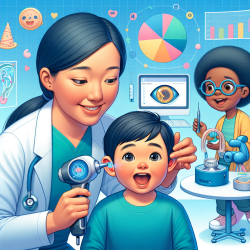Introduction
The field of Child and Adolescent Psychiatry (CAP) is critical in addressing the mental health needs of children and adolescents. However, a significant workforce shortage poses challenges to providing adequate care. The research article "Building" the Twenty-First Century Child and Adolescent Psychiatrist offers insights into innovative solutions to enhance CAP training and address these shortages.
Understanding the Workforce Shortage
In the United States, the distribution of CAP professionals is uneven, with some states having significantly fewer psychiatrists than needed. This shortage is exacerbated by the fact that only a small percentage of psychiatry residents choose CAP as a subspecialty. Contributing factors include longer training durations, lower financial compensation, and perceived lower professional status.
Innovative Training Pathways
The research suggests several innovative pathways to address these issues:
- Shortened Training Pathways: Introducing CAP training directly from medical school through a shortened pathway can increase recruitment. Models such as a 3-year CAP training program or a 4-year combined psychiatry/CAP model are proposed.
- Loan Forgiveness Programs: Financial incentives such as loan forgiveness can attract more trainees to the field.
- Telehealth and Integrated Care: Expanding training in telehealth and integrated care models can improve access to care and provide trainees with essential skills for modern practice.
Global Perspectives and Opportunities
Benchmarking against international training models can provide innovative opportunities for CAP training in the US. For instance, the Union of European Medical Specialists (UEMS-CAP) promotes harmonization between training programs in Europe, which could serve as a model for global collaboration.
CAP training programs in countries like Australia, New Zealand, and Singapore emphasize developmental and family systems principles, offering valuable insights into potential improvements for US training programs.
Emerging Areas and Future Directions
CAP is anticipated to grow in areas such as collaborative care, population-based care, and the integration of digital therapies. Training programs must adapt to these emerging areas by incorporating new competency requirements and ensuring that training is efficient and effective.
Incorporating educational research in adult learning and involving trainees in program decision-making can enhance training outcomes. Additionally, integrating telehealth and diversity-equity-inclusion (DEI) training into existing curricula can prepare trainees for the challenges of modern practice.
Conclusion
The dual goals of optimizing training and preparing CAP fellows for emerging areas require creative solutions that leverage national and international innovations. By carefully monitoring and assessing new approaches, we can ensure that CAP meets the mental health needs of children and families in the US and globally.
To read the original research paper, please follow this link: "Building" the Twenty-First Century Child and Adolescent Psychiatrist.










